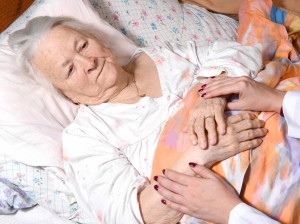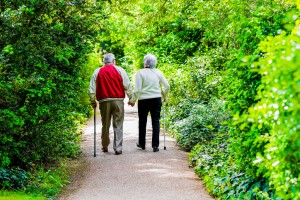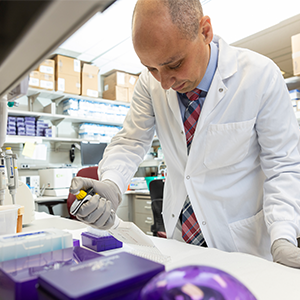-

Mayo Clinic Health Letter: Highlights from the April 2015 Issue
ROCHESTER, Minn. ― Here are highlights from the April issue of Mayo Clinic Health Letter. You may cite this publication as often as you wish. Reprinting is allowed for a fee. Mayo Clinic Health Letter attribution is required. Include the following subscription information as your editorial policies permit: Visit http://healthletter.mayoclinic.com/ or call toll-free for subscription information, 1-800-333-9037, extension 9771. Full newsletter text: Mayo Clinic Health Letter April 2015 (for journalists only).
Exercise eases depression symptoms
Increasing evidence shows that exercise can ease the symptoms of depression and anxiety. The April issue of Mayo Clinic Health Letter covers how exercise changes the brain and alleviates symptoms.
 Depression is linked to abnormally low levels of certain neurotransmitters ― chemicals in the brain that allow nerves to communicate with one another. Having less norepinephrine, dopamine and serotonin in the brain results in lower nerve stimulation than usual, contributing to feelings of sadness and emptiness, loss of interest in normal activities, tiredness, anxiety and trouble thinking.
Depression is linked to abnormally low levels of certain neurotransmitters ― chemicals in the brain that allow nerves to communicate with one another. Having less norepinephrine, dopamine and serotonin in the brain results in lower nerve stimulation than usual, contributing to feelings of sadness and emptiness, loss of interest in normal activities, tiredness, anxiety and trouble thinking.
Antidepressant medications work by increasing the levels of these chemicals and bringing them back to normal. Exercise does the same thing. In addition, new evidence shows that exercise sets into motion changes that protect the brain against the damaging effects of stress and enhance resilience to depression.
Exercise also has positive emotional and social effects that can help deal with stress and depression. Regular exercise helps:
- Regain a sense of control and boost confidence: This comes from learning new exercises, rising to new physical challenges and meeting activity goals.
- Minimize worries: Exercise can be a distraction from recurring worries.
- Cope in a healthy way: Exercise is a positive way to manage anxiety and depression. Trying to feel better by drinking alcohol, dwelling on negative feelings or hoping symptoms will go away can lead to worsening symptoms.
Does exercise really help? Reviews of studies examining the antidepressant effects of exercise in people with depression have found exercise can be just as effective as medication or talk therapy. Even short or one-time bouts of exercise can temporarily boost mood.
Older adults: Caution advised with sleeping pill use
Older adults with sleeping concerns should be very cautious about sleeping pills, according to the April issue of Mayo Clinic Health Letter.
While sleeping pills can at times be an effective part of therapy to improve sleep, older adults are more susceptible to side effects such as dizziness, lightheadedness and a risk of dependence. Sleeping pills also suppress breathing, which can worsen breathing problems such as sleep apnea.
Other side effects can include problems with thinking and body movement, drowsiness after waking up, or having daytime memory and physical performance problems. Sleeping pills use may increase the risk of falling, particularly at night.
When a sleeping pill is needed, short-acting, newer-generation drugs are usually the first choice. They include zaleplon (Sonata), zolpidem (Ambien, others) and ramelteon (Rozerem). Side effects are common but they tend to occur less frequently and with less severity than older-generation benzodiazepines.
Low doses of antidepressant drugs that cause sleepiness may be an option for those who also have depression. Options include amitriptyline, doxepin (Silenor), mirtazapine (Remeron) and trazodone.
Mayo Clinic sleep experts recommend that older adults keep sleeping pill use to a minimum, as an occasional sleep aid or over the short term of a few weeks while other options to improve sleep are explored with a care provider.
Walking, simple exercises improve balance
Balance exercises can benefit anyone, especially older adults. The April issue of Mayo Clinic  Health Letter covers why older adults sometimes struggle with balance and offers strategies to move with more confidence.
Health Letter covers why older adults sometimes struggle with balance and offers strategies to move with more confidence.
With age, some of the systems involved in balance and stability change. Vision can decline. Depth perception is reduced, and night vision might be more difficult. Changes can occur in the way the muscles respond to nerve signals, and a decline in physical activity can result in loss of muscle strength. Reduced speed and muscle power can make it harder to respond to situations that affect balance.
Exercises to strengthen and maintain balance can help older adults live more actively and move more confidently. A big benefit is reduced risk of falls, a leading cause of injury in older adults.
Almost any activity that involves standing and moving is helpful to maintaining good balance. One of the best ways to improve balance is by walking, really a two-for-one benefit because walking improves balance and is an aerobic exercise.
A number of studies have shown that certain simple exercises improve balance, too. They can be done most anywhere, as long as there is a something sturdy to grasp as needed. Options include shifting weight from one foot to the other, walking heel to toe or purposefully lifting a leg forward and holding it for a second while walking in a straight line.
Working to improve balance can easily be incorporated into everyday tasks, such as balancing on one foot while brushing teeth; squatting down, rather than bending over, to open a drawer or pick up an item; carrying groceries while walking sideways; or standing up and sitting down without using hands.
For those who have difficulty maintaining balance while standing, it’s advisable to check with a doctor before starting balance exercises. A physical or occupational therapist can teach exercises in a safe environment and assist with developing a home exercise program.
Mayo Clinic Health Letter is an eight-page monthly newsletter of reliable, accurate and practical information on today’s health and medical news. To subscribe, please call 1-800-333-9037 (toll-free), extension 9771, or visit www.HealthLetter.MayoClinic.com.
###
About Mayo Clinic
Mayo Clinic is a nonprofit organization committed to medical research and education, and providing expert, whole-person care to everyone who needs healing. For more information, visit http://www.mayoclinic.org/about-mayo-clinic and https://newsnetwork.mayoclinic.org/.
MEDIA CONTACT: Brian Kilen, Mayo Clinic Public Affairs, 507-284-5005, newsbureau@mayo.edu







